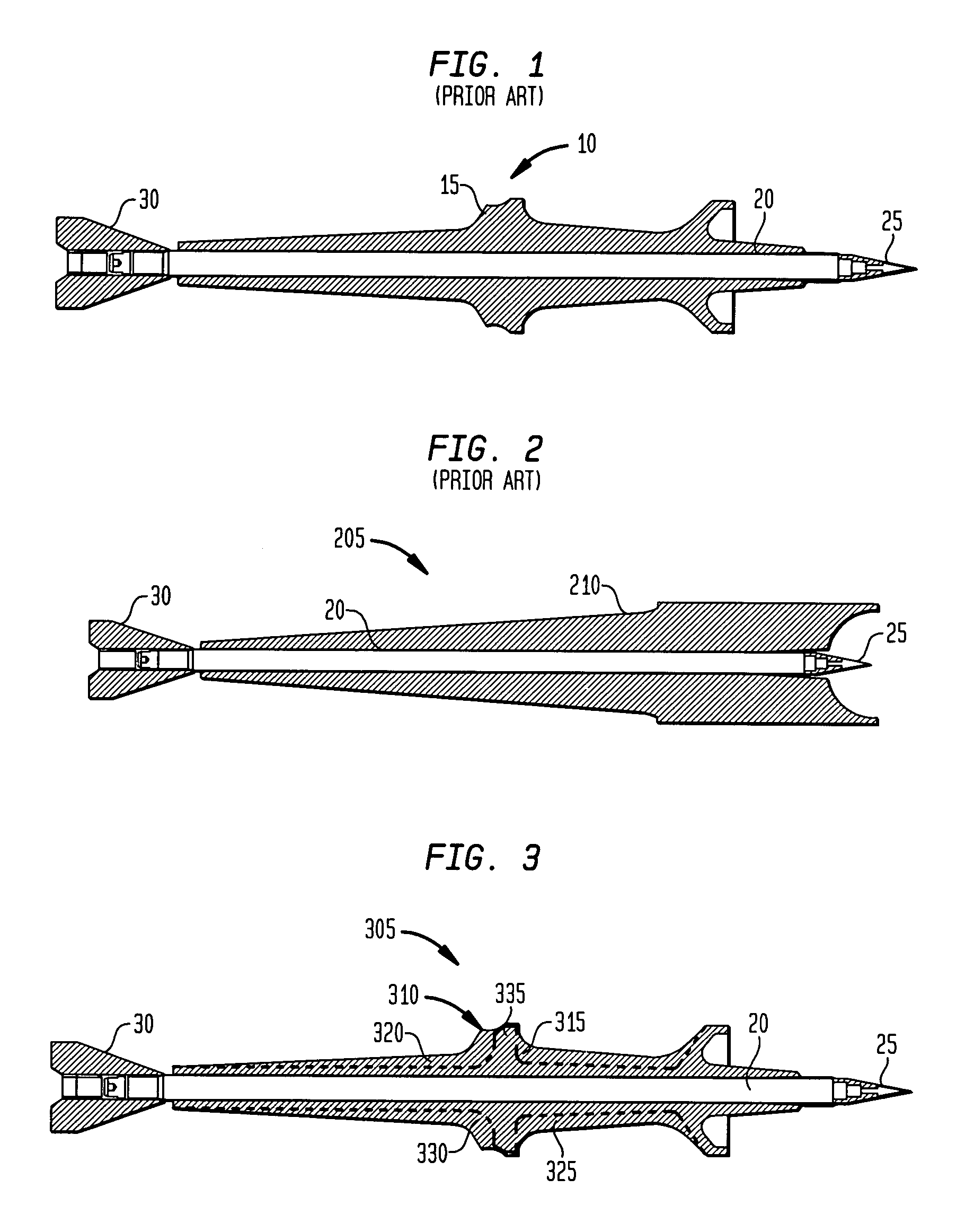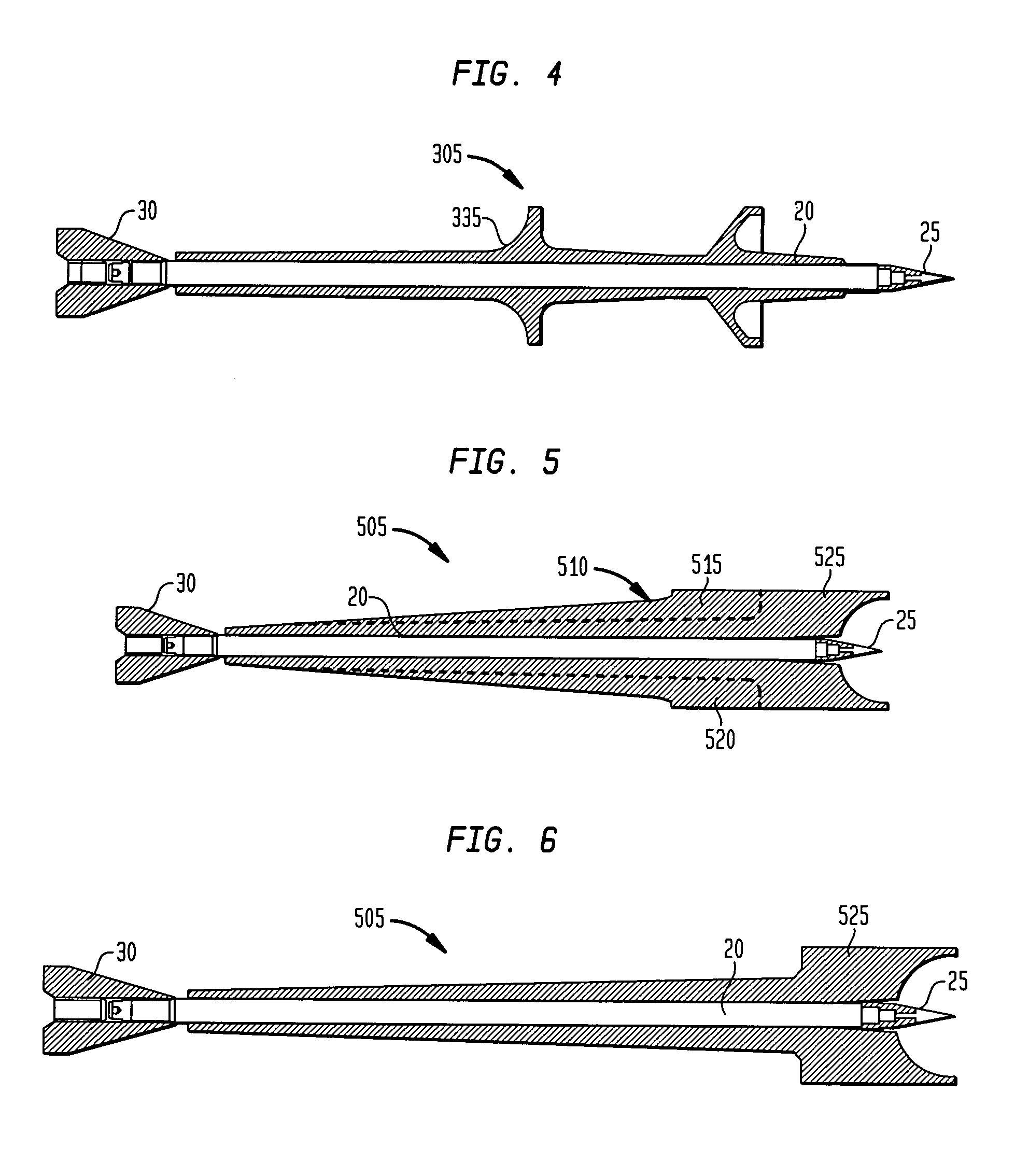Sabot for reducing the parasitic weight of a kinetic energy projectile
a kinetic energy and projectile technology, applied in the field of military ordinance, can solve the problems of reducing the stress on the sabot, the energetic parts of the sabot can burn, and the sabot's mass decrease, so as to reduce the force on the energetic sabot, reduce the sabot's mass, and thin out
- Summary
- Abstract
- Description
- Claims
- Application Information
AI Technical Summary
Benefits of technology
Problems solved by technology
Method used
Image
Examples
Embodiment Construction
[0025]FIG. 1 is a cut-away profile view of a prior art kinetic energy tactical projectile 10 using a standard sabot 15. The kinetic energy tactical projectile 10 is comprised of a sabot 15, a projectile rod 20, a nose 25, and a fin 30. FIG. 2 is a cut-away profile view of a prior art kinetic energy tactical projectile 205 using a puller sabot 210. The kinetic energy tactical projectile 205 is comprised of a puller sabot 210, a projectile rod 20, a nose 25, and a fin 30.
[0026]FIG. 3 and FIG. 4 are cut-away profile views of a kinetic energy projectile 305 with an energetic pusher sabot 310. FIG. 3 illustrates the size of the energetic pusher sabot 310 needed for shot start. Energetic regions 315, 320, 325, 330 are the part of the energetic pusher sabot 310 no longer needed for support as the energetic pusher sabot 310 travels up the gun tube (not shown). After energetic regions 315, 320, 325, 330 are burned away, the energetic pusher sabot 310 is reduced to the pusher sabot base 335. ...
PUM
 Login to View More
Login to View More Abstract
Description
Claims
Application Information
 Login to View More
Login to View More - R&D
- Intellectual Property
- Life Sciences
- Materials
- Tech Scout
- Unparalleled Data Quality
- Higher Quality Content
- 60% Fewer Hallucinations
Browse by: Latest US Patents, China's latest patents, Technical Efficacy Thesaurus, Application Domain, Technology Topic, Popular Technical Reports.
© 2025 PatSnap. All rights reserved.Legal|Privacy policy|Modern Slavery Act Transparency Statement|Sitemap|About US| Contact US: help@patsnap.com



